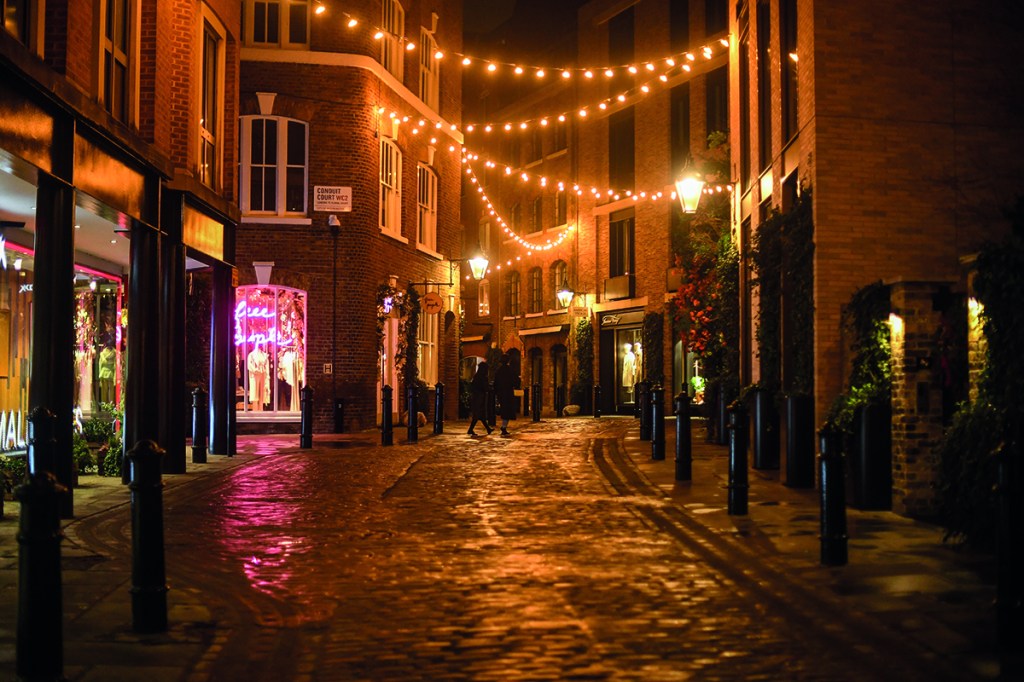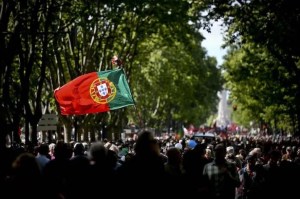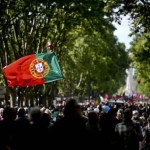The silenced city has been, for some, uncanny. Deserted evening streets, darkened pubs, shut shops and the absence of fellow footsteps might suggest that some essential spirit has fled. Yet this is exactly the wrong way to look at it, says the novelist, historian and biographer Peter Ackroyd. For him, both lockdown and winter provide opportunities to see London in a different light.
‘The silence and the empty streets are very appealing,’ he says. ‘This is the time when Londoners get to hear distant church bells,’ he adds. ‘The identity of the city changes enormously in the winter and loses some of its majesty — but it retains its life and light. Twilight comes quickly, and the glow of the evening light permeates in ways that are not possible during other seasons. And the city becomes a hibernating animal which radiates warmth even as it sleeps.’
Peter Ackroyd, 71, is the chronicler of London’s soul. As well as his histories of the city and its river, a great many of his novels including the unsettling metaphysical thriller Hawksmoor and the lovingly evoked Victoriana of Dan Leno and The Limehouse Golem — have focused on the city’s darker, more obscure corners, and those vulnerable figures, standing at an awkward angle to society, who haunt its shadows. Yet his range is never predictable. His new novel, Mr Cadmus, is a blackly witty fable set in a remote village in north Devon; what begins as an E.F. Bensonesque black comedy of manners between two ladies of a certain age and their new Italian neighbor soon blossoms into something altogether stranger and unsettling — a tale of vengeance that begins to take on the swerving, lurid velocity of a fever dream.
Yet even this found its inspiration in London, says Ackroyd. ‘Cadmus was conceived of some time ago: I was in a restaurant just off Shaftesbury Avenue when I saw these two elderly ladies with this gentleman of Italian appearance with a curled mustache. A strange trio. The image of the three was so unlikely that the novel started there.’
It is a story that crackles with malice. ‘I had some experience of rural life in north Devon when I lived there in the 1990s,’ says Ackroyd. ‘I was aware of the undercurrents of so-called ordinary life. I lived outside Barnstaple and I got to know some of the locals. And yes. There is an undercurrent of menace in the countryside.’
England’s rural landscape offers tantalizing glimpses of different, dreamier worlds — ‘the ancient barrows and the ancient hills, the prehistoric mounds, all retain a sense of power and scaredness which no modern architectural intervention can obscure,’ says Ackroyd. This is true of London too. ‘London is a sacred landscape — to walk the streets is to walk through ancient pathways and ancient trackways. If it is possible to wander at will through hitherto unrecognized streets, all to the good. It is a refreshing way of reconnoitering the city. Walking is the best exercise but also superb for exploration. London is a paradise for walkers: streets, alleys, lanes, pathways.’
And there has perhaps never been a better time, in the dark, muffled midwinter, for its citizens to investigate districts and areas of which they know little: not just the delightful maze of alleys that honeycomb the City, but more offbeat attractions. The close built tenements and warehouses of Southwark, the road names which pay tribute to Chaucer’s pilgrims and Dickens’s Little Dorrit (and all of which feature in Ackroyd’s The Great Fire of London); the Thames Path and canal-side walks through Wapping, Shadwell and Limehouse (their unregenerated decaying docklands form creepily evoked in Hawksmoor); moments of dusty grandeur in and around the City Road and Hoxton (the 1920s versions of which are painted movingly in English Music); and the cobbles and haunted viaduct hollows of Clerkenwell near the submerged River Fleet (The House of Doctor Dee).
Ackroyd is a wildly prolific writer, so much so that he is possibly taken rather for granted. His appointment as a Companion of the British Empire might have been an exasperated effort by society simply to keep up, but throughout the rich variety of his work, that incantatory voice remains the same. In someways, he resembles the Thames, to which he devoted an entire book (Sacred River).
He works fast, different subjects catching his attention like swirling eddies. Whether writing biographies of Blake, Thomas More, Shakespeare or Hitchcock (strong London threads) more lateral studies such as Queer London or a titanic six-volume history of England (the final volume due this year), he never stops to reflect on previous books or fiction. He has never reread any of his novels.
‘There just isn’t the room,’ he says, laughing. ‘If I continually looked back, my head would be stuffed like an old museum.’
As such, the year of lockdown actually made little difference to his life: the writing continued apace. He is currently working on a new novel — The English Pope, set in the near future — plus a history of English acting, from Burbage onwards, and a book about the hidden colors of the city. ‘It is not a city automatically associated with color, other than gray or green,’ he says. ‘But look for instance at the Thames, which takes on such a variety of different colors throughout the course of a day.’
Nor does he bother with newspapers or journals any longer — everything he reads relates to what he calls ‘the work’. Nonetheless, his conception of the cyclical nature of London’s history — the patterns and echoes of its history — makes him bracing about its current gloom. There have been those who have predicted that the City of London itself could not survive: that economic disaster would reduce its once grand buildings — and the sleek modern towers at Canary Wharf — to empty shells. ‘London has always attracted apocalyptic thinking,’ says Ackroyd lightly now. ‘People have imagined it reduced to ruins. It has had worse epidemics, worse catastrophe.’ Even the twilight that followed Roman withdrawal in the 5th century — a popular image of ghostly abandoned villas — was not quite the case: the Anglo-Saxon mercantile city continued to thrive and make use of the structures left behind.
In Ackroyd’s vision of the city, nothing is ever completely lost: the riverbank mud now yields offerings from the long distant dead; songs, rhymes and place names like ‘Maiden Lane’ echo those of centuries beforehand; even the perennially busy traffic junction at Angel lies at the intersection of two prehistoric trackways. And by extension, his own literary evocation of London is now itself deeply embedded in the city’s rich artistic fabric; he is one of the very few writers — along with Dickens — who has conjured a London more real and vivid than the one we ordinarily see.
‘The amount of times I have read that London will never be the same again,’ he says. ‘And yet it always continues. It is a city of gold. A city of fire.’
This article was originally published in The Spectator’s February 2021 US edition.


















